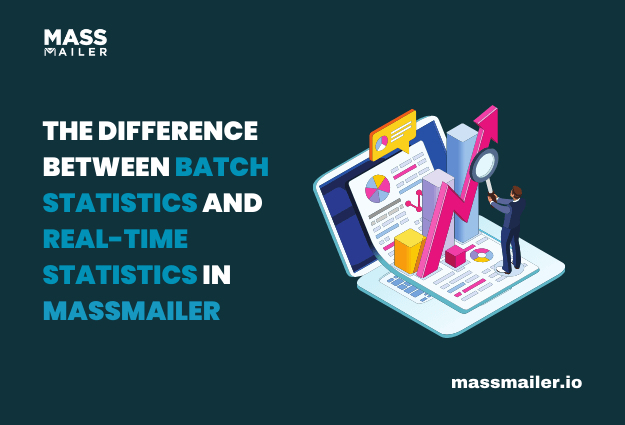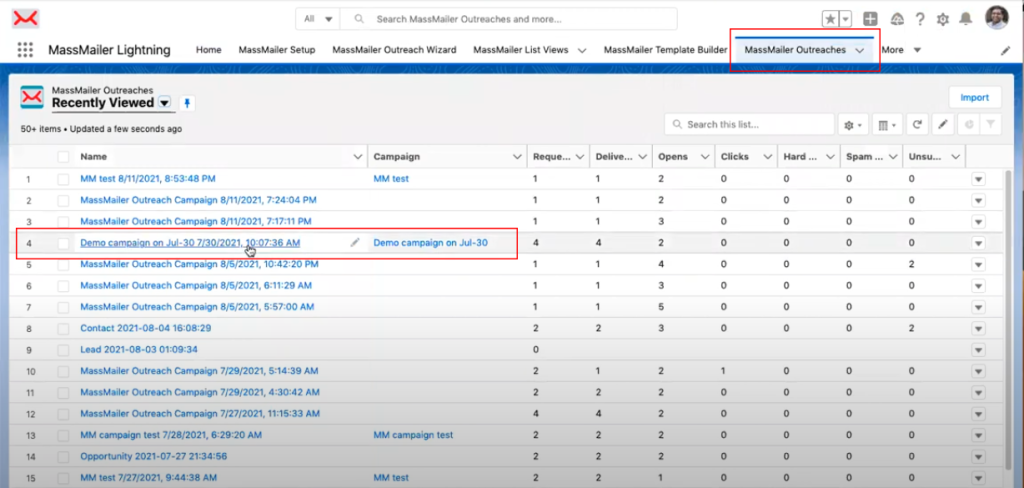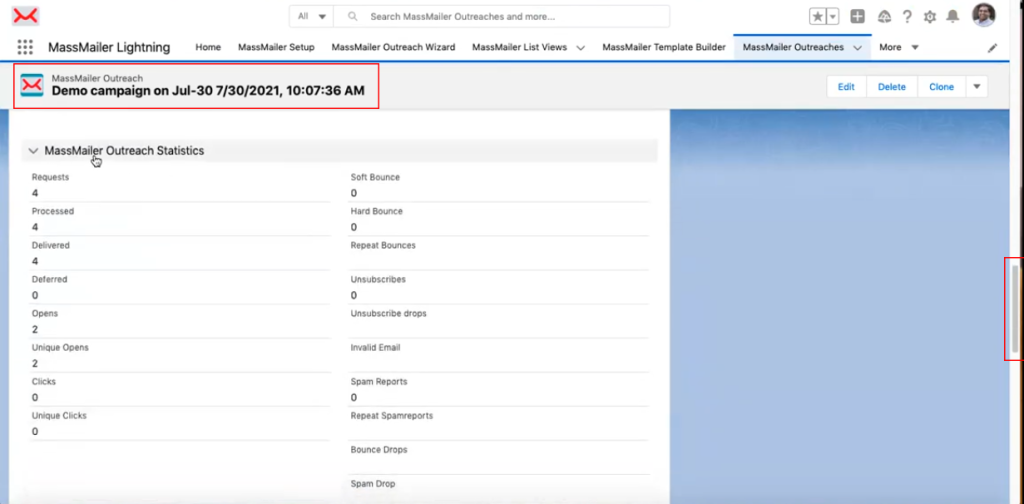The Difference Between Batch Statistics and Real-Time Statistics in MassMailer
Analyzing statistics is a rudimentary aspect of gauging the success of an email campaign. If you are a MassMailer power user, there are three types of statistics available to help you gain valuable insights into your email campaigns’s performance.

That said, you also need to understand what each of these statistics represents in order to interpret them more accurately.
This blog will walk you through the various types of statistics MassMailer offers, and where to find them, and will highlight the key differences between them to help you make a more informed analysis of your campaigns.
The Different Types of Statistics Available in MassMailer
As touched upon earlier, MassMailer offers three types of statistics. Let’s look at each, individually.
1. MassMailer Outreach Statistics

Also known as batch statistics, this type provides a high-level view of overall campaign performance. It covers all the key metrics you need to analyze a mass campaign from the number of emails delivered, opens, unique opens, and so on to the number of spam drops.
These statistics refresh every 15 minutes and present static values that can be used in Salesforce reports to monitor campaign performance over time.
However, one key point to note is that MassMailer’s outreach statistics only show aggregate numbers and do not detail which recipients took specific actions.
2. Performance Statistics

Unlike the previous set of statistics that shows numbers, this type offers the same values but in the form of percentages to help better gauge the efficiency and performance of your email campaigns.
Just as is the case with batch statistics, these too refresh every 15 minutes.
3. Real-Time Statistics

As the name alludes to, real-time statistics capture and display email engagement events almost instantly as recipients interact with messages.
Due to MassMailer’s integration with SendGrid, type is capable of capturing events like opens, clicks, bounces, and deliveries as they occur, enabling you to track dynamic engagement levels on the Outreach Object.
Another unique benefit of the Outreach Real-time statistics is that the data is drillable, meaning, you can click through to see which specific contacts or leads have interacted with your emails.
Where Can You Find These Statistics withinMassmailer?
You can access all of the above statistics under the MassMailer Outreach tab. Once there, click on the campaign whose statistics you need to view.

Once the details for the selected campaign open, scroll further down and you will find each type of statistic within its dedicated sections.

The Key Differences Between Batch Statistics and Real-Time Statistics
MassMailer’s Batch and Real-time Statistics can be differentiated on three primary parameters.
1. Update Frequency
MassMailer’s batch statistics update every 15 minutes. While the delay allows it to provide consistent and accurate data, you may not have much to work on when a new campaign has just been launched.
MassMailer’s real-time statistics, on the other hand, update in real-time and offer an immediate view of campaign performance.
2. Reporting Capabilities
MassMailer’s batch statistics are stored as fields on the Outreach object and as a result, you can run Salesforce’s standard reports on them.
Real-time statistics are event-driven and dynamic, meaning they are not stored in the same way as batch statistics. As a result, you cannot run reports on them but are available for immediate review within the Outreach object itself.
3. Detail and Granularity
Batch statistics display only aggregate totals for metrics like opens and clicks, making them ideal for high-level performance analysis and as touched upon earlier, lack specific recipient details.
Real-time statistics, meanwhile, offer a more granular view and allow you to see which specific recipients have interacted with your emails and how.
Summing It Up
MassMailer offers multiple avenues to gauge your email campaign’s performance. The key however is to understand the differences between what each of these statistics represent.
To sum up, if you want a high-level report of your email performance, batch statistics are your best bet, and if you want minute-by-minute updates of engagement and interactions you can refer to MassMailer’s real-time statistics.
If you are a Salesforce user who wants to run mass email campaigns from within the Salesforce ecosystem without its limitations, MassMailer is a powerful solution you should consider. With it you can run everything from drip to mass email campaigns without having to leave Salesforce.
Start MassMailer’s free 15-day trial to know how.
